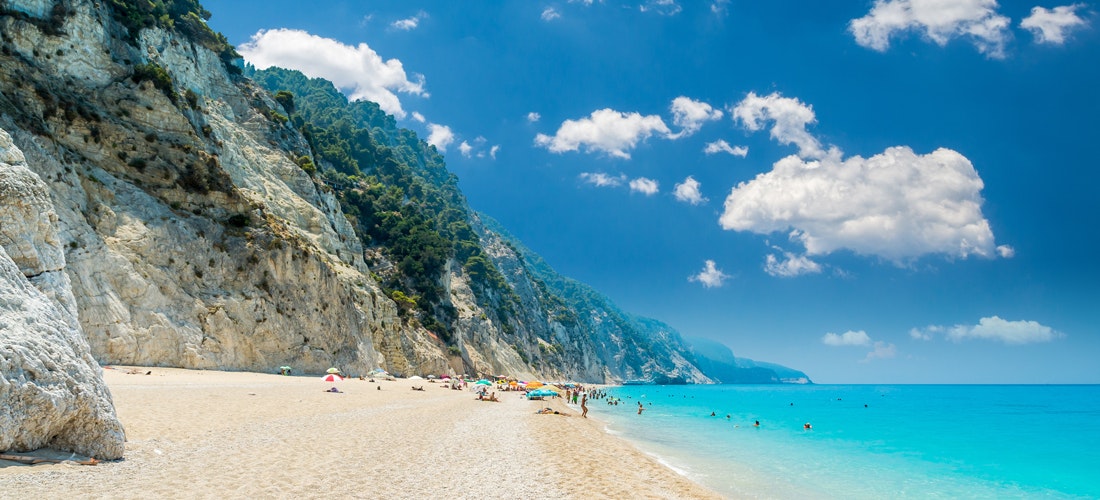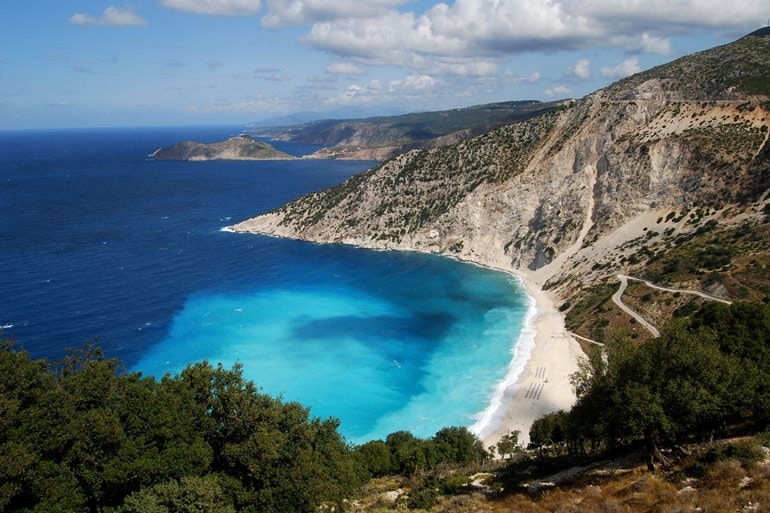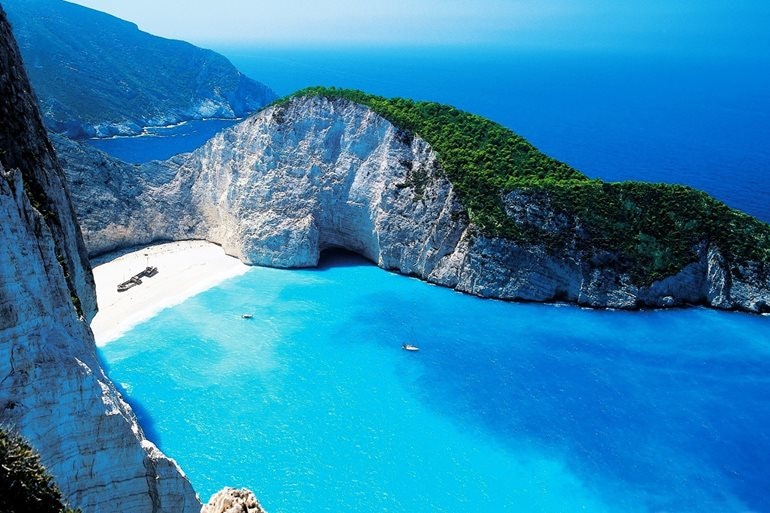Lefkada
Directly off the coast of mainland Greece, not far from Corfu Island, is the fourth largest island in the Ionian Sea, Lefkada. It is the only island that in addition to air and water routes you can also reach by land. This is made possible by two bridges that connect Lefkada with the mainland. The largest entry point for sailing yachts is the local city pier or marina.
Despite being a tourist destination, Lefkada has maintained its natural character and tends not to be as overcrowded as some of the other islands. Beautiful white beaches lie in beautiful contrast to the turquoise sea, with deep green vegetation on the cliffs along the coast and breathtaking sunsets that are a visual delight. Lefkada offers it all.
Mountains spread out for 300 km square, sloping down to the fertile lowlands and seashore. The whole island is typified by its fertility and lush vegetation, which is the result of abundant rainfall, especially in winter and spring. You can see all the traditional Greek plants, such as olive trees, plane trees, pines, grapevines, cypress trees, and a variety of colourful flora. Along the edges of the island are the most beautiful beaches in all of Greece with fine white sand, bright pebbles and crystal clear waters, beaches such as Porto Katsiki or Egremni.
The limestone cliffs along the coast create a perfect backdrop and are responsible for the light blue colour of the seawater. Sometimes, however, they make it difficult to get on the beach at all, but in most places there are suitable means for accessing paradise, either by boat or on foot down the long staircases on the rocky slopes.

It is not very well known that Lefkada is not essentially, an island, since it was not until the 6th century BC that the Corinthians separated it from the mainland with a 20 m wide channel. It still exists today and is complemented by a bridge and road that raises every hour to allow larger ships to pass. Like most cities in the area, the city of Lefkada was destroyed in 1953 by a huge earthquake and its rapid reconstruction was not ideally executed. The waterfront, however, is very pleasant. The true Greek atmosphere that will take you back centuries in time, can be experienced further inland, where you will find original mountain villages that time has forgotten. You can see the undisturbed life of local people, often still attired in traditional village clothing.
Lefkada Town Pier
Anchoring is on the northeastern or southern side of town. Because of the pier extending from the end of the southern side, it is better to land, bows-to. The South Pier has the benefit of pulling you away from the pier in the overwhelming NW wind, its disadvantage being that dust from the city blows directly into the boat. On the NE side you are pulled towards the pier, which is usually not a problem unless you are dragging the anchor. However, the bottom is covered with sticky mud, so the anchor should hold fast. Water and fuel are available on the pier and nearby, there is a shipyard which is handy for any repairs. Near the pier there are several very well-stocked supermarkets.
Lefkada Marina
Lefkada Marina is located directly to the south of the city pier with an entrance at its southern part. The depth here is from 2.5 to 4 m and offers 434 berths. In summer due to the NW wind, the waters may be slightly restless and some berths may be affected by southern winds. The marina has a complete infrastructure, including water, electricity, workshops and a mini-market. Bigger stores can be found in the city.
It can be said that Lefkada is still a market town with little use for tourism. It is a small town and a harbour with narrow streets and colourful houses full of the sounds of traditional Greek music and the fragrance of flowers drifting down from people’s balconies. The town does not hibernate in winter, even when most of the tourists have left. The main busy thoroughfare, Odos Dorpfeld, is named after the German archaeologist Wilhelm Dorpfeld (1853–1940) who discovered many surprising facts about the history of the city during his excavations. The local residents hold him in high regard. Some of his discoveries are exhibited in the small Museum of Archaeology. More interesting, however, is the local Museum of Folk Traditions where exact models of some of Dorpfeld’s excavations and impressive photos of the city before the 1953 earthquake are housed. At the northern end of the canal, you cannot overlook the beautiful ruins of the Sánta Mávra Fortress from the 14th century.


